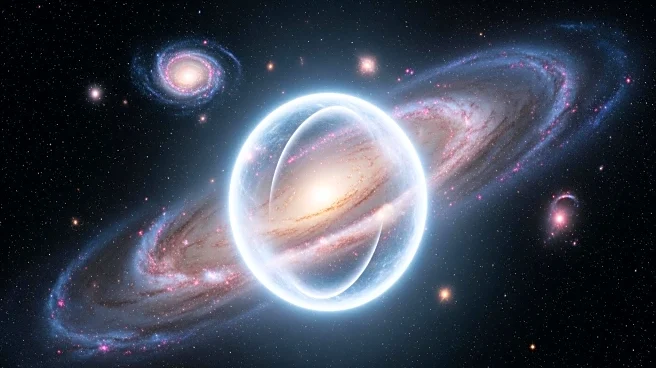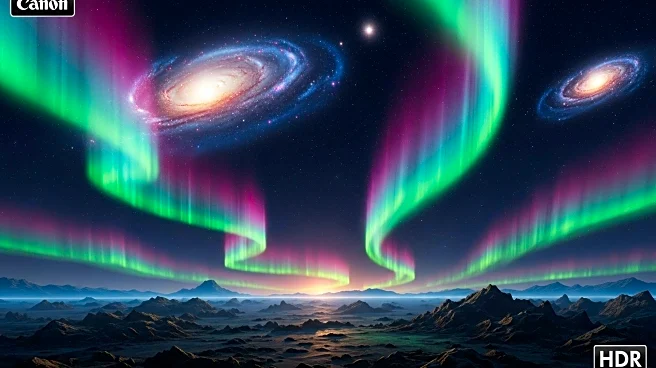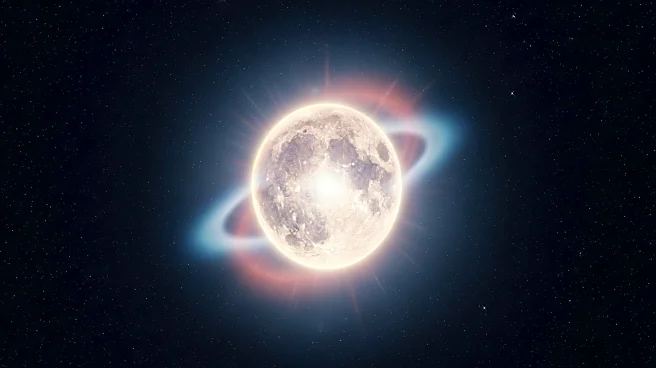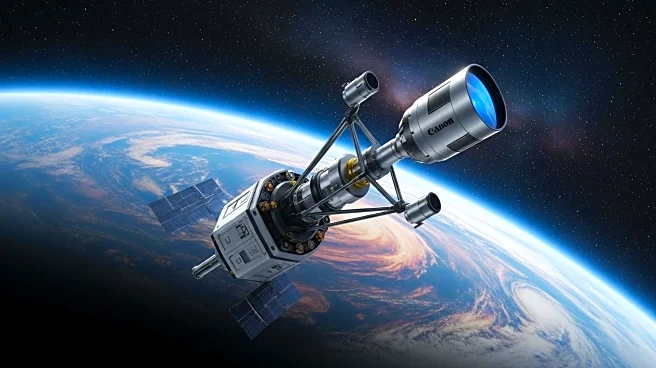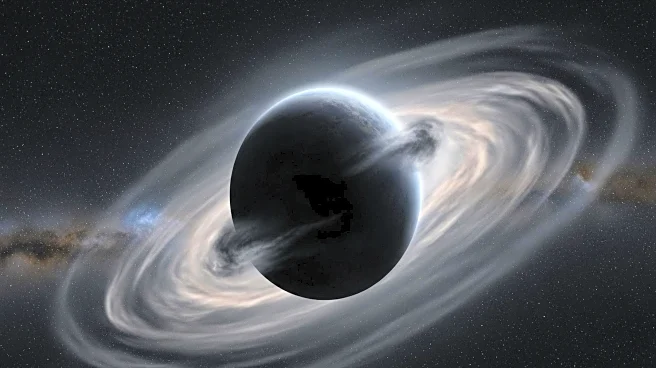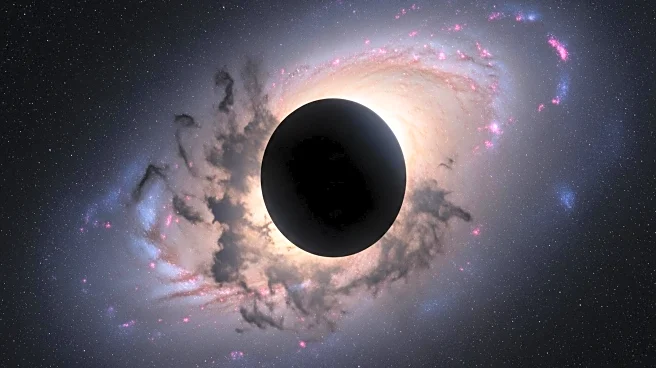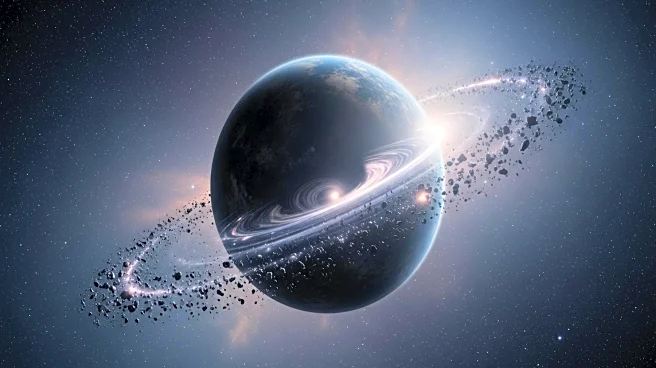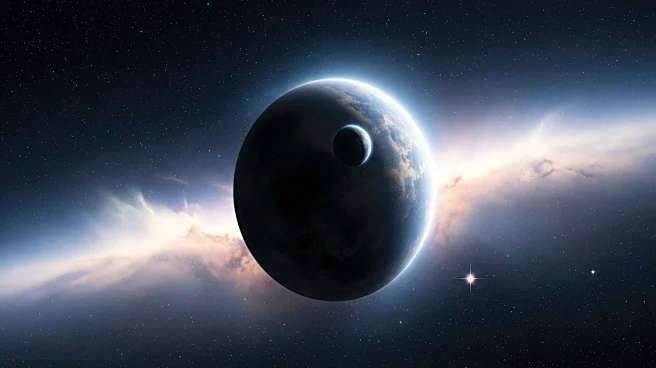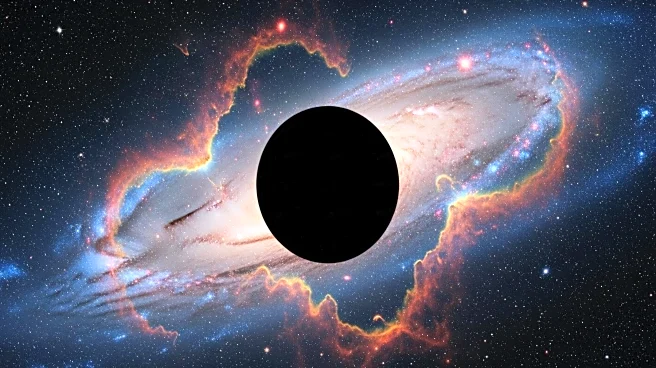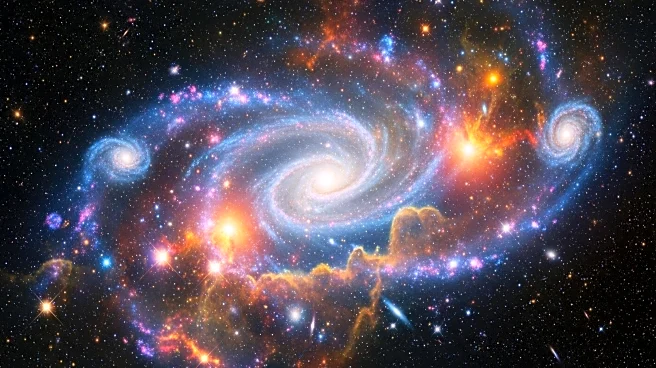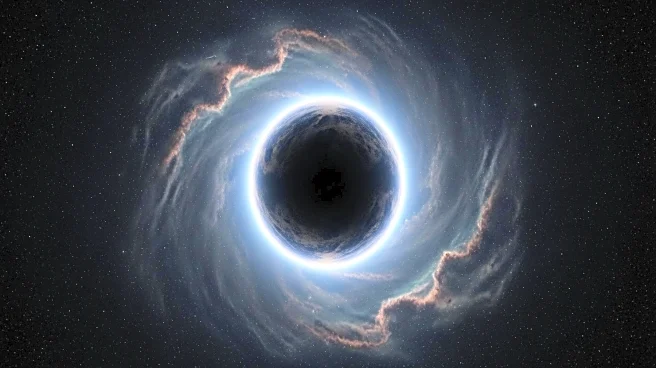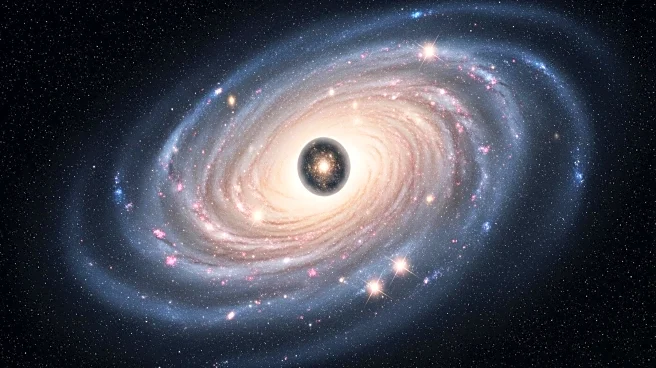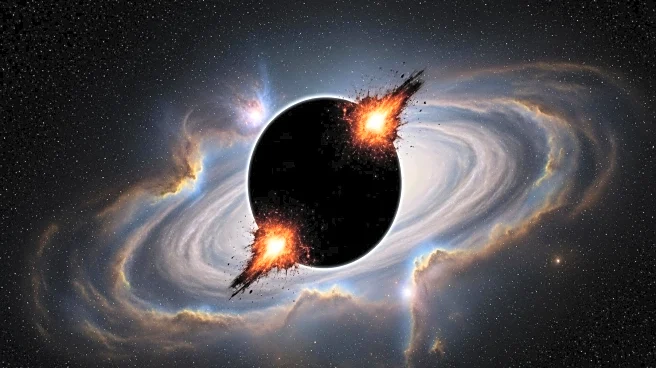What is the story about?
What's Happening?
Astronomers have observed a rogue planet, named Cha 1107-7626, consuming gas and dust at an unprecedented rate of 6 billion tons per second. This discovery challenges traditional distinctions between stars and planets. Unlike typical planets that orbit stars, rogue planets drift freely through space. Cha 1107-7626, located approximately 620 light years away in the constellation Chamaeleon, has a mass five to ten times that of Jupiter and is estimated to be 1 to 2 million years old. The planet's rapid growth is attributed to accretion, a process where it draws matter from a surrounding disc. This phenomenon, usually associated with stars, has never been recorded at such a scale for a planetary-mass object. The study, conducted by a team of researchers using the European Southern Observatory's Very Large Telescope and data from the James Webb Space Telescope, highlights the unique characteristics of this rogue planet.
Why It's Important?
The discovery of Cha 1107-7626 consuming matter at such a rapid pace has significant implications for our understanding of planetary formation and behavior. It suggests that some planetary-mass objects may form similarly to stars, from contracting clouds of gas and dust, and experience growth spurts akin to newborn stars. This challenges existing theories about the formation and evolution of planets and stars, potentially leading to new insights into the processes that govern celestial bodies. The presence of water vapor during the accretion episode further blurs the line between planetary and stellar characteristics, indicating complex chemical interactions. This finding could influence future astronomical research and the study of exoplanets, expanding our knowledge of the universe's diverse planetary systems.
What's Next?
The study of Cha 1107-7626 opens new avenues for research into rogue planets and their formation processes. Astronomers may continue to monitor this planet to understand the long-term effects of its rapid accretion and the role of magnetic activity in driving matter towards it. Further observations could reveal more about the chemical changes occurring in the disc surrounding the planet, offering insights into the conditions that lead to the formation of planetary-mass objects. This research may also prompt a reevaluation of existing models of planetary and stellar formation, potentially leading to new theories and discoveries in the field of astronomy.
Beyond the Headlines
The discovery of Cha 1107-7626 raises intriguing questions about the nature of rogue planets and their potential to behave like stars. This challenges the traditional binary classification of celestial bodies and suggests a more complex spectrum of characteristics. The study invites speculation about the existence of other rogue planets with similar behaviors and the possibility of discovering new types of celestial objects. It also highlights the importance of advanced telescopes and observational technology in uncovering the mysteries of the universe, emphasizing the need for continued investment in astronomical research.
AI Generated Content
Do you find this article useful?
